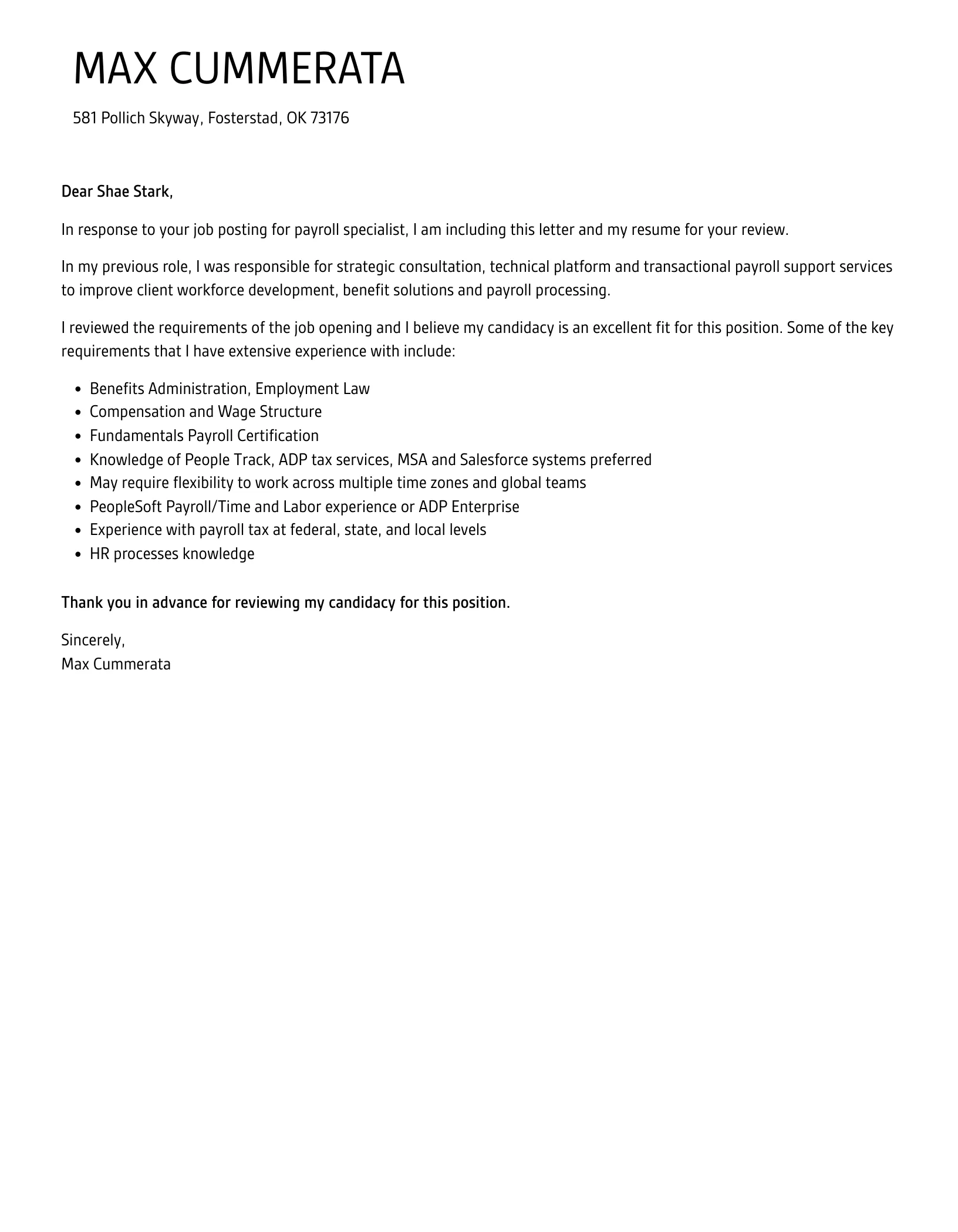What is a Payroll Specialist and What Do They Do?
A Payroll Specialist plays a critical role in ensuring employees are paid accurately and on time. This involves a variety of tasks, including processing timesheets, calculating wages, managing deductions, and issuing paychecks or direct deposits. They are also responsible for maintaining payroll records, ensuring compliance with tax regulations, and addressing employee inquiries related to pay. Payroll Specialists often use specialized software and must be detail-oriented, organized, and possess strong analytical skills. The role requires a good understanding of accounting principles and employment laws.
Skills Employers Seek in Payroll Specialists
Employers look for a combination of technical skills and soft skills in a Payroll Specialist. Technical skills include proficiency in payroll software (like ADP, Paychex, or QuickBooks), data entry, and understanding of payroll processes and tax regulations. Soft skills are equally important and include attention to detail, strong organizational abilities, excellent communication skills, and problem-solving skills. Experience with payroll accounting, reconciliation, and reporting is highly valued. The ability to maintain confidentiality and handle sensitive information with discretion is also crucial.
Essential Skills to Highlight in Your Cover Letter
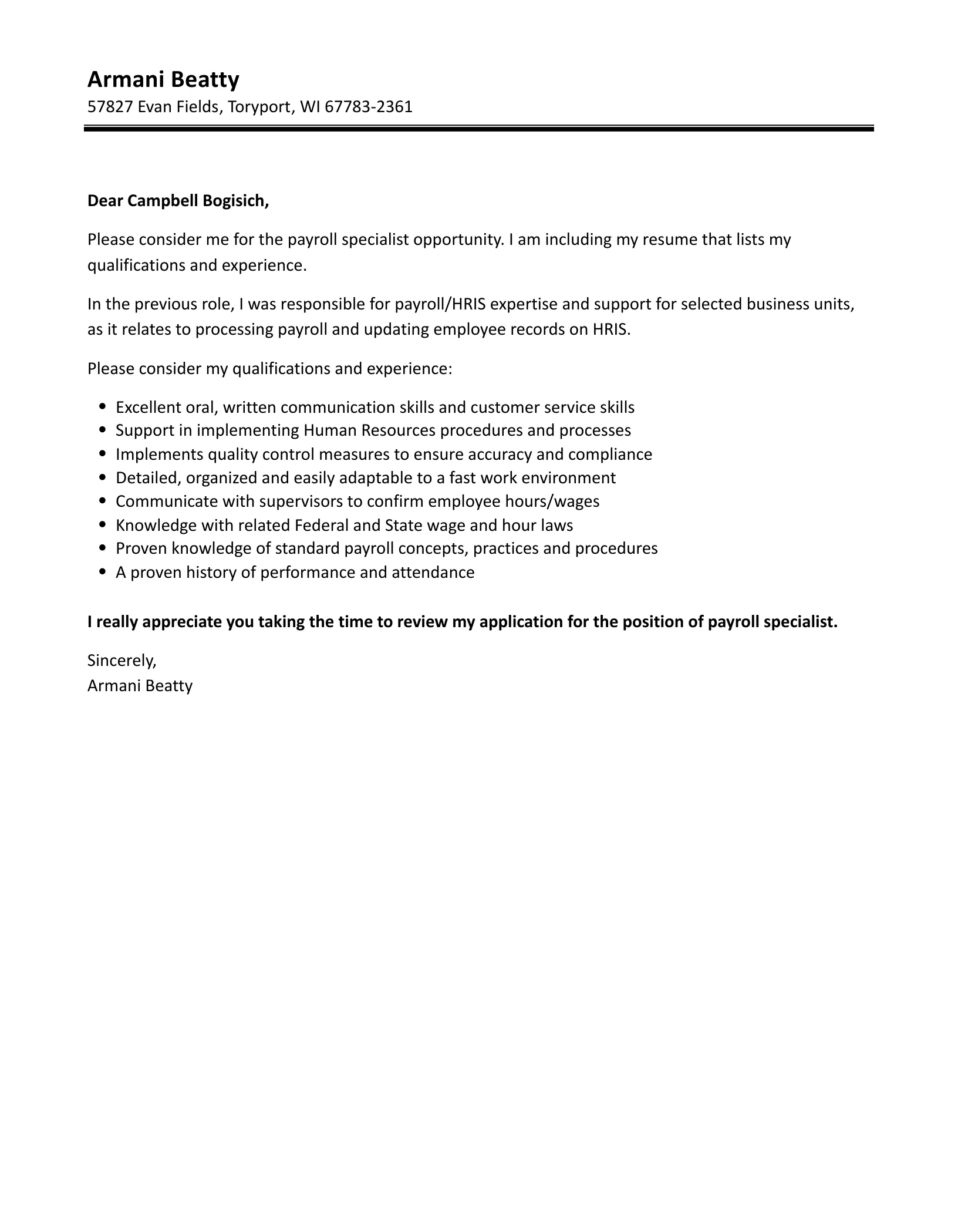
Even without direct payroll experience, you can emphasize transferable skills that are valuable in this role. These include strong mathematical abilities, proficiency in data entry and analysis, organizational skills, and attention to detail. Highlight any experience with accounting software, even if not directly related to payroll. Also, showcase your communication skills, both written and verbal, as you will be interacting with employees and potentially vendors. Emphasize your problem-solving skills and your ability to learn new software or processes quickly.
Understanding the Cover Letter Structure
A well-structured cover letter is your chance to make a strong first impression. It should follow a standard format: a header with your contact information, a salutation, an introduction, body paragraphs that highlight your skills and address the lack of experience, a closing paragraph, and a professional sign-off. Each section serves a specific purpose in presenting your qualifications and demonstrating your interest in the position. Proper formatting and a clear, concise writing style are essential for keeping the reader engaged and conveying your message effectively. Using keywords from the job description will also help tailor the letter.
Header and Contact Information
Start with your full name, address, phone number, and email address. Make sure your email address is professional. Then, include the date and the recipient’s name, title, and company address. This provides the necessary contact details for the employer and shows you’ve taken the time to properly format your letter.
Greeting and Introduction
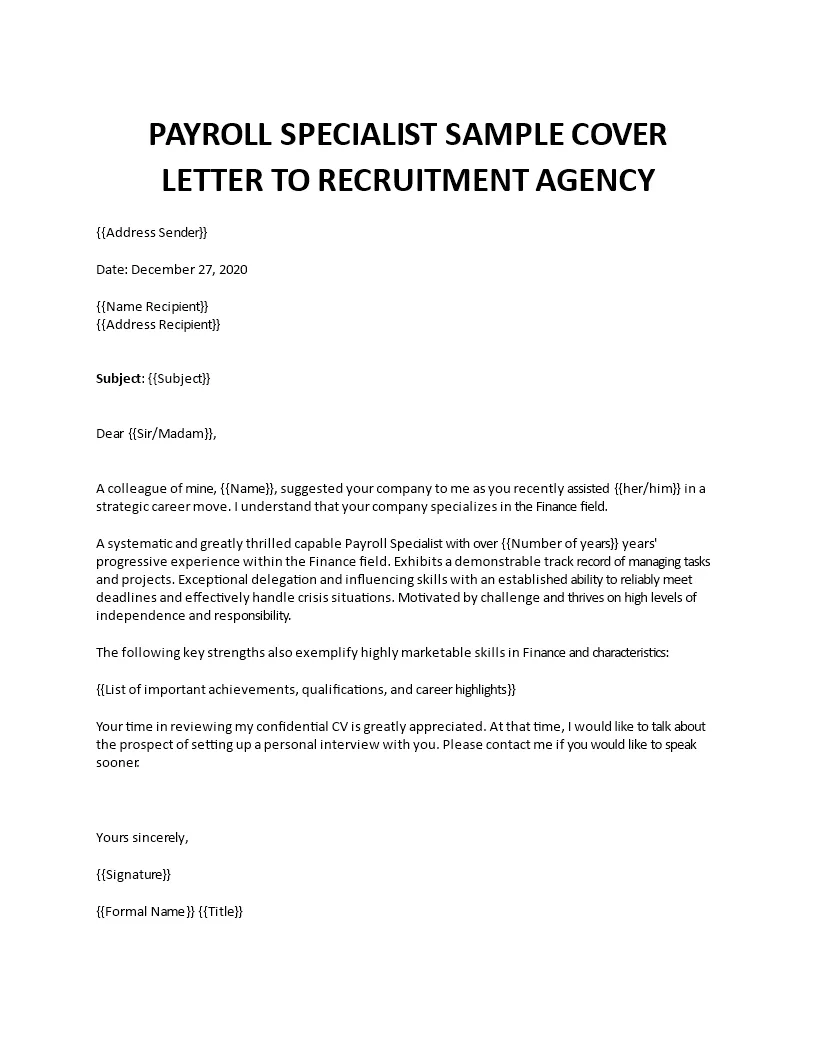
Begin with a professional greeting such as “Dear Mr./Ms./Mx. [Last Name],” if you know the hiring manager’s name. If you don’t, use a general greeting like “Dear Hiring Manager.” In your introduction, state the position you are applying for and where you found the job posting. Briefly express your interest in the role and company, and mention a key skill or accomplishment that grabs their attention. Keep this section brief and focused on creating a positive first impression.
Body Paragraph 1 Expressing Enthusiasm
In the first body paragraph, express your enthusiasm for the position and the company. Briefly explain what excites you about the role and what attracts you to the organization. Show that you have researched the company and understand its values and mission. Mention something specific that resonated with you, such as a company initiative or a recent achievement. Your genuine enthusiasm can help make up for the lack of direct experience and showcase your passion for the payroll field.
Highlighting Transferable Skills
In this section, focus on the transferable skills that make you a good fit for the payroll specialist role. Provide specific examples of how you’ve used these skills in previous experiences, even if they were not payroll-related. For instance, if you have experience in data entry, highlight the accuracy and speed you demonstrated. If you have organizational skills, mention how you managed complex projects or tasks. If you have strong communication skills, describe a situation where you effectively communicated with a team or addressed a customer’s concern. Tailor your examples to align with the job description requirements.
Body Paragraph 2 Addressing the Lack of Experience
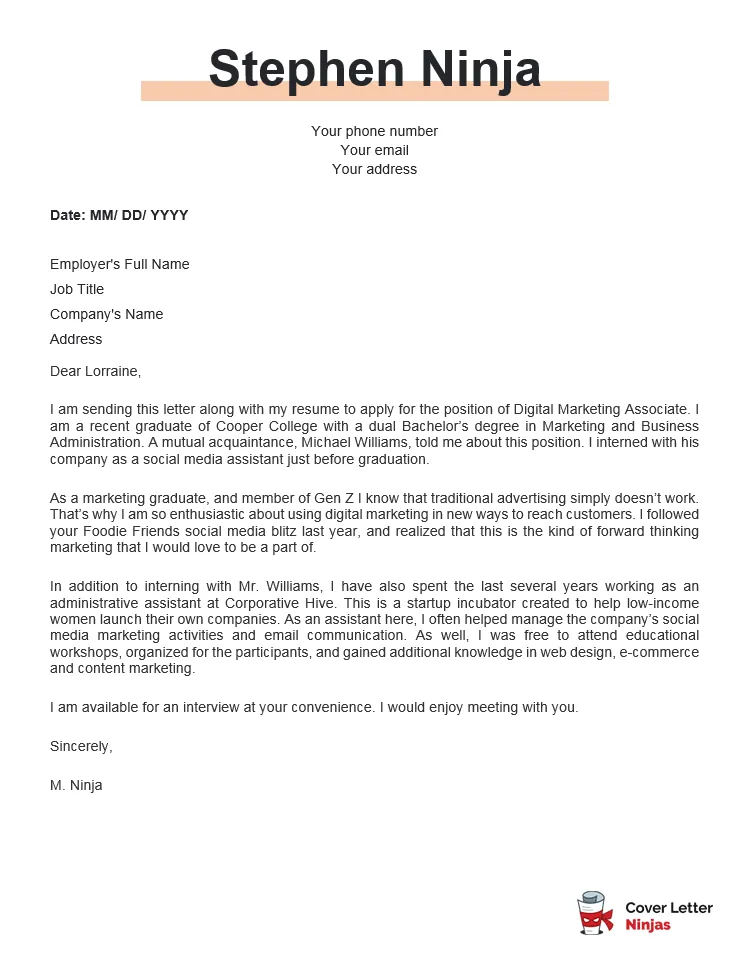
It’s important to acknowledge the lack of direct payroll experience but do so in a positive and proactive way. Focus on what you do have to offer rather than dwelling on what you lack. Frame the absence of experience as an opportunity to learn and grow within the company. Emphasize your eagerness to acquire new skills and your dedication to the field. You can briefly mention how you are actively seeking opportunities to gain knowledge, such as through courses, certifications, or personal research.
Emphasizing Relevant Coursework or Training
If you’ve completed any relevant coursework, training, or certifications, be sure to highlight them. Include any accounting courses, business administration studies, or any courses related to payroll or human resources. If you’ve obtained a certification like the Certified Payroll Professional (CPP) or Fundamental Payroll Certification (FPC), be sure to mention it prominently. Even if the training isn’t directly related to payroll, showing a willingness to learn and develop skills is valuable.
Body Paragraph 3 Showcasing Research and Knowledge
Demonstrate your knowledge of payroll processes and your understanding of payroll regulations and best practices. Mention any research you’ve done on the company or the payroll industry. You can briefly discuss the types of payroll software you’re familiar with or interested in learning. Showing that you’re already knowledgeable about the field and its key principles will help establish your credibility and interest. Also, if you understand payroll compliance, it will be a major advantage.
Demonstrating Your Understanding of Payroll Processes
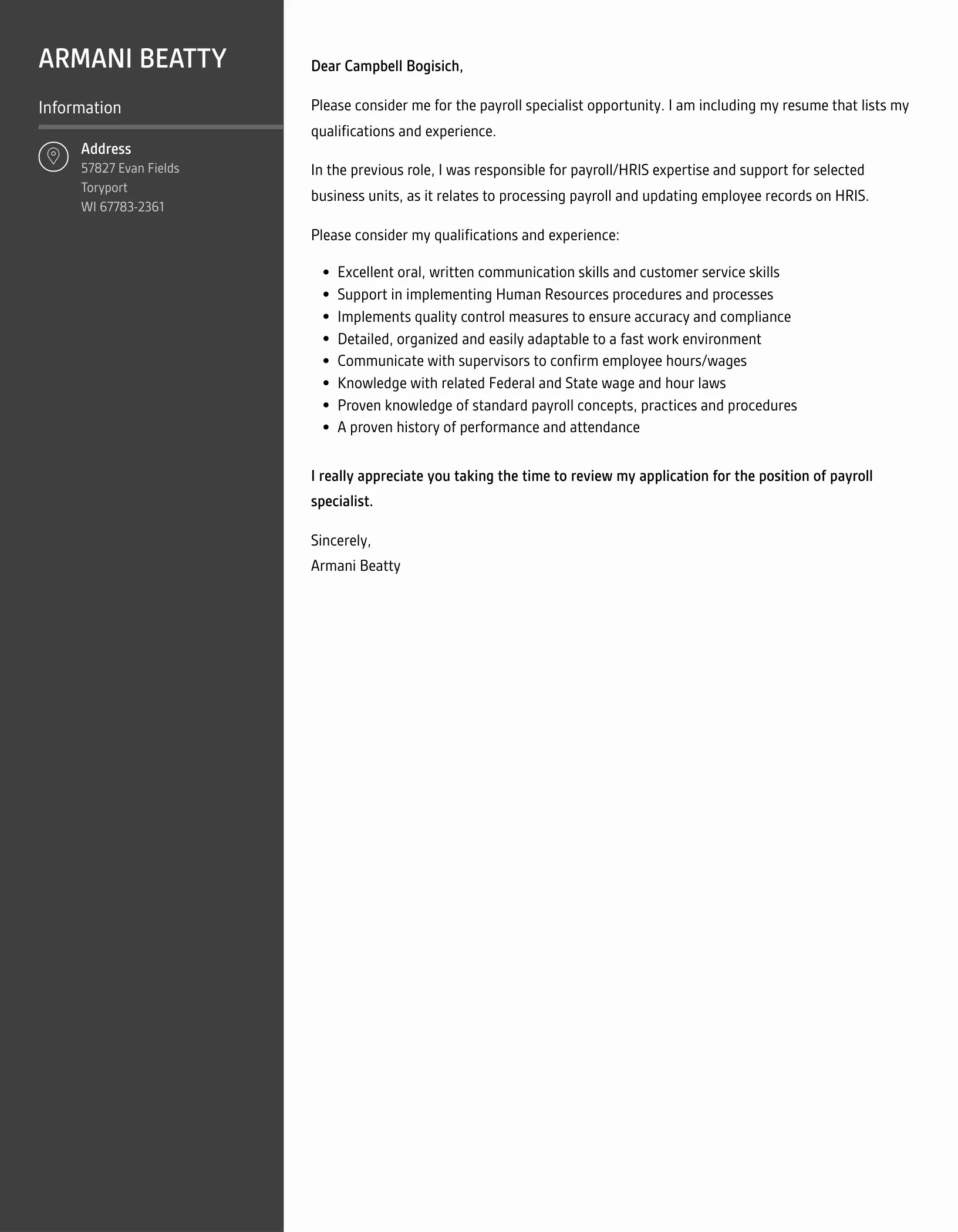
Show your familiarity with the basic payroll process. Discuss your understanding of how payroll cycles work, including the importance of accuracy and deadlines. Touch on key concepts like gross pay, net pay, deductions, and taxes. Even if you don’t have hands-on experience, demonstrating a grasp of the fundamental principles can significantly improve your application. Make sure that you clearly show your understanding of various payroll processes.
Closing Paragraph and Call to Action
In your closing paragraph, reiterate your interest in the position and your enthusiasm for the company. Thank the hiring manager for their time and consideration. Include a clear call to action, such as stating that you are eager to discuss your qualifications further in an interview. This signals your initiative and desire to move forward in the hiring process. Proofread to make sure that you have included all the relevant information.
Expressing Gratitude
Always express your gratitude to the hiring manager for considering your application. This shows respect and professionalism. A simple sentence like, “Thank you for your time and consideration,” is sufficient. This demonstrates that you value their time and appreciate the opportunity.
Suggesting a Follow-up
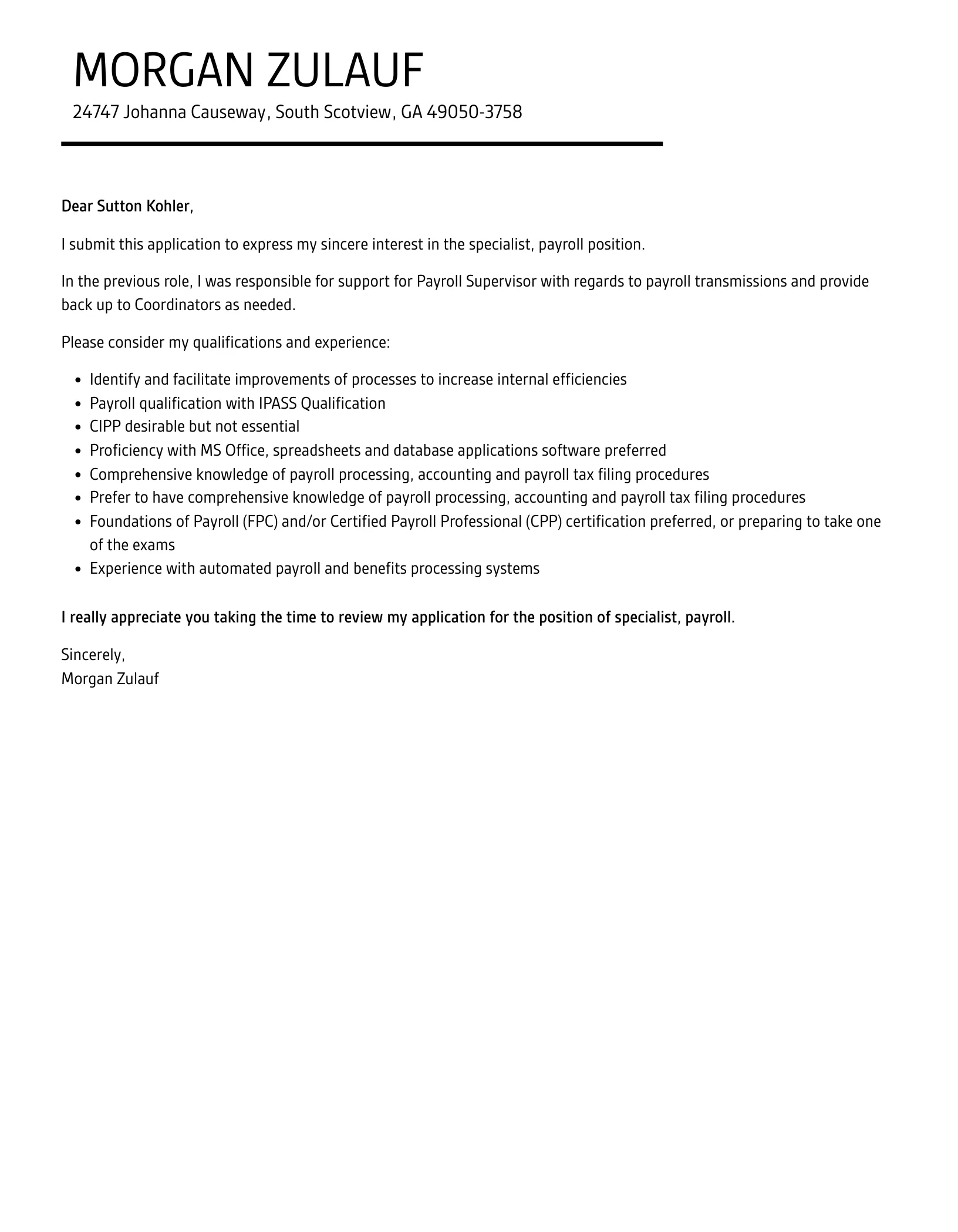
Conclude your cover letter with a polite statement indicating that you are available for an interview. You might say, “I am eager to discuss my qualifications further in an interview and can be reached at [your phone number] or [your email address].” Including this shows proactive behavior and lets the employer know you are very interested in the role.
Proofreading Your Cover Letter
Before submitting your cover letter, proofread it carefully for any grammatical errors, spelling mistakes, and typos. Errors can reflect poorly on your attention to detail, which is an essential skill for a Payroll Specialist. Read the letter aloud to ensure that it flows well and that the tone is professional and engaging. Ask a friend or family member to review it as well, as a fresh pair of eyes can often catch mistakes you might miss.
Formatting and Presentation
Use a clean and professional font such as Times New Roman, Arial, or Calibri in a standard size (11 or 12 points). Maintain consistent formatting throughout the letter, including line spacing and margins. Keep the letter concise, ideally within one page. Use bullet points to highlight your skills and accomplishments. This helps to keep the letter easy to read and visually appealing. Good formatting shows respect for the reader’s time.
Common Mistakes to Avoid
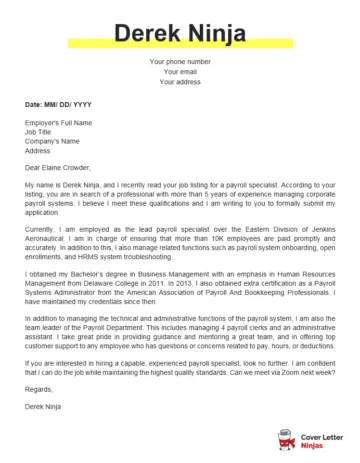
There are several common mistakes to avoid in your cover letter. Being aware of these will help you create a more effective application.
Using Generic Language
Avoid using generic phrases and clichés. Instead, use specific examples and concrete details to demonstrate your skills and experience. Tailor your letter to the specific job requirements and the company. Do not use generic salutations, such as “To Whom It May Concern.” Try to find the name of the hiring manager and address the letter directly to them. Show that you understand what the company is looking for.
Focusing Solely on Lack of Experience
While it’s important to acknowledge the lack of direct experience, don’t dwell on it. Spend more time highlighting your transferable skills and your enthusiasm for the role. Frame the absence of experience as an opportunity for you to learn and grow within the company. Focus on what you can bring to the table.
Neglecting to Tailor the Letter
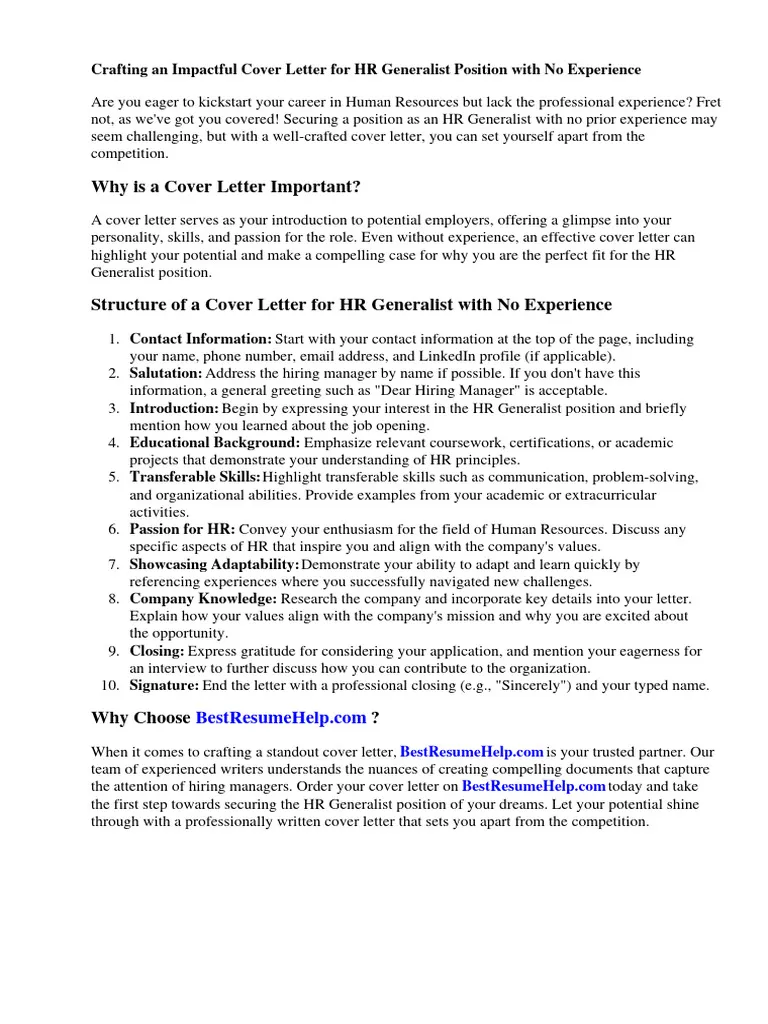
Each cover letter should be tailored to the specific job description. Avoid sending out generic cover letters. Customize each letter to address the specific requirements and keywords listed in the job posting. Demonstrate that you have read the job description carefully and understand the needs of the position. Highlighting your understanding of what the company needs is key to catching their attention.
Payroll Specialist Cover Letter Example
Your cover letter should ideally include the header, salutation, introduction, the body paragraphs, the closing paragraph and a professional sign-off. You can find multiple cover letter examples for payroll specialist positions online. These examples can help you to structure and organize your application. Always customize these examples to make them suitable to your profile and the specific job requirements.
Customizing Your Cover Letter
Ensure that you customize your cover letter for each job you apply for. Read the job description carefully and identify the key skills and qualifications that the employer is seeking. Use these keywords and phrases throughout your cover letter. Explain how your skills and experience align with the requirements of the position. Tailoring your cover letter demonstrates your genuine interest in the role and your understanding of the company’s needs.
Tailoring to the Specific Job Description
Carefully review the job description and identify the skills and qualifications that are most important to the employer. Customize your cover letter to highlight the skills and experiences that are most relevant to the specific job. Provide specific examples of how you’ve demonstrated these skills in past roles or academic experiences. Use the same keywords and phrases that are used in the job description.
Showcasing Your Personality
While maintaining a professional tone, let your personality shine through in your cover letter. This can help the hiring manager get a sense of who you are and how you might fit into the company culture. Use your writing style to express your enthusiasm for the position and to showcase your unique skills and experiences. Your personality will help you to stand out from other applicants.
Tips for Submitting Your Cover Letter
Follow all the instructions provided in the job posting. This includes information on how to submit your cover letter and resume. Always attach your cover letter and resume in the required formats. If you’re submitting your application electronically, make sure that your files are properly named and that they are easy to open. Proofread everything before submitting your application.
File Format
Save your cover letter as a PDF or DOCX file unless the job posting specifies a different format. A PDF format ensures that your formatting will remain consistent regardless of the software or device used to open it. If the job posting asks for a specific file format, always follow their instructions. This shows that you pay attention to detail and respect their process.
Follow-up Strategy
After submitting your application, follow up with the hiring manager within a week or two. You can send a brief email to reiterate your interest in the position and to inquire about the status of your application. If you don’t hear back after a reasonable period, send another follow-up email. Following up demonstrates your initiative and your interest in the position. Make sure that you properly formulate the follow-up email.
